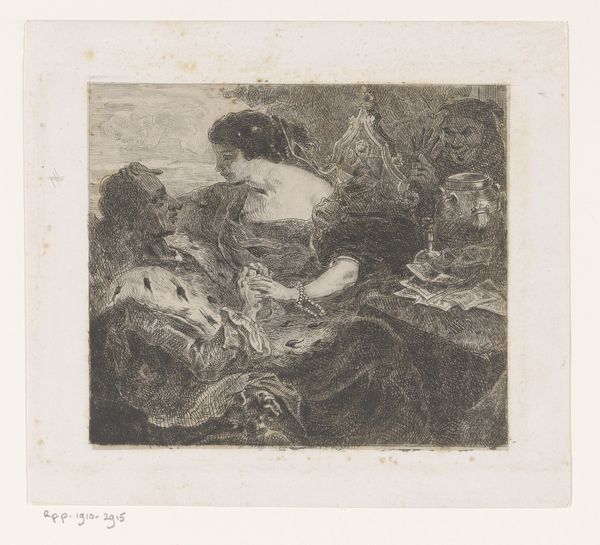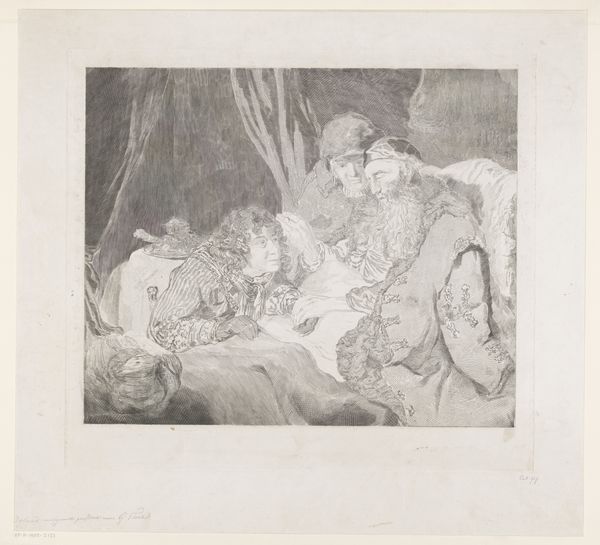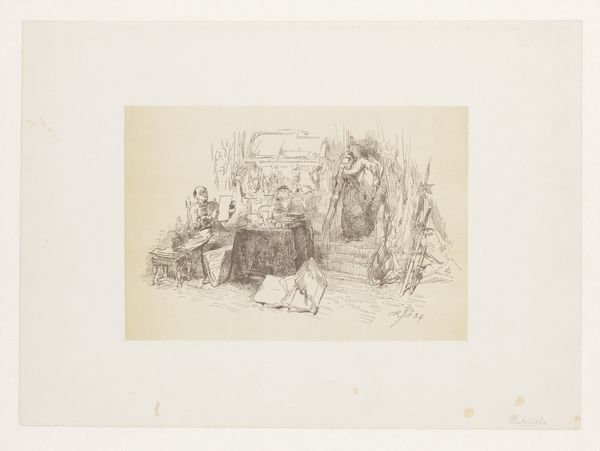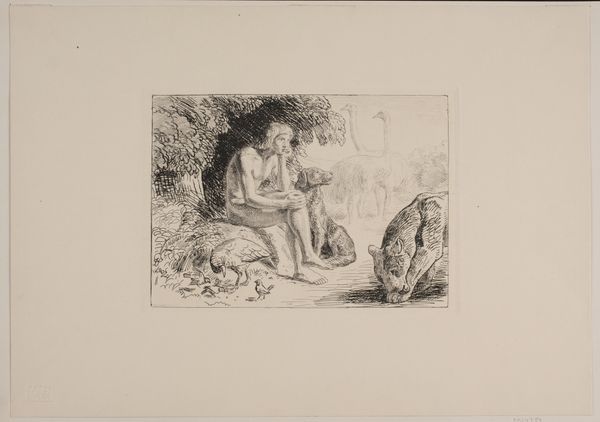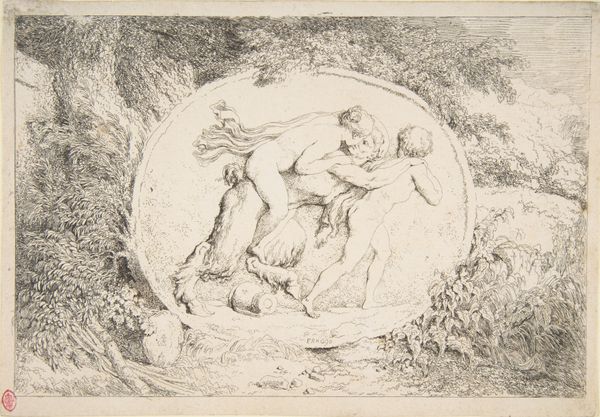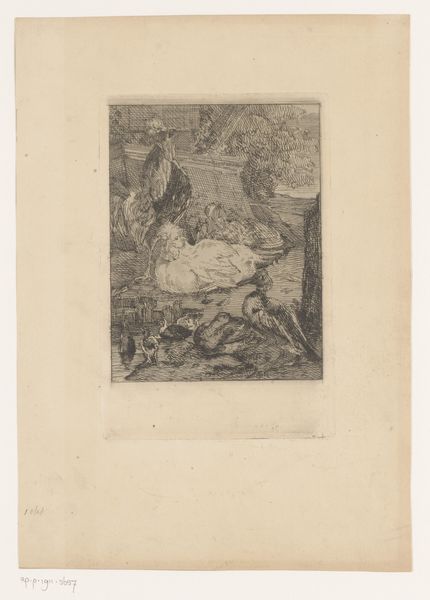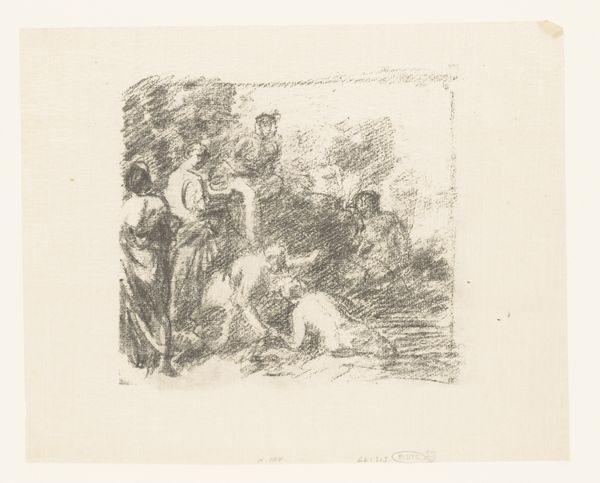
drawing, pencil
#
portrait
#
pencil drawn
#
drawing
#
pencil sketch
#
etching
#
pencil drawing
#
pencil
#
history-painting
#
academic-art
Dimensions: height 144 mm, width 190 mm
Copyright: Rijks Museum: Open Domain
Curator: Welcome. Here we have Jacob Joseph Eeckhout’s work "Isabella at the table of Charles VI" dating from 1803 to 1861, held here at the Rijksmuseum. It's rendered primarily in pencil. Editor: My initial impression is one of intimacy, even with such a detailed rendering. The artist captures a private moment with subtle line work. The monochromatic palette definitely aids the solemn tone. Curator: The scene depicts Isabella of Portugal tending to Charles VI of France. His reign was marked by periods of mental instability, which contextualizes the compassionate gesture of Isabella in this domestic sphere. It highlights not only her caretaking role, but also the broader expectations placed upon women to support and perhaps even manage the health crises of powerful men. It's a very charged dynamic that underscores gender roles in 15th century European royalty. Editor: Indeed, it's the relationship between figures that dominates the image. The lines composing Isabella are fluid and soft, reflecting her youth and perceived gentleness. In contrast, Charles' face is etched with deeper, more angular lines, portraying his suffering. The entire composition is structured around their interaction, guiding the viewer's eye to the emotional core. It all serves to frame Isabella's virtue. Curator: Exactly! It's a subtle propaganda, isn't it? Consider the cultural climate in the 19th century when Eeckhout made this drawing; there was significant national interest in mythologizing images of feminine virtue, domestic stability, and even subtle foreign influence to solidify national identity. How do you read the arrangement of the objects on the table in light of these notions? Editor: I see your point. Taking another look at the objects on the table: a wine flagon and loosely scattered coins create a sense of lived space, all achieved by simple etching. But these are merely functional to create pictorial space. If this were rendered with an eye to light and shadow the narrative might come alive through tone as well. Curator: Thank you, this look into historical positioning relative to formal artistic qualities helps to broaden our awareness. Editor: Precisely; studying form, after all, can sometimes reveal underlying ideologies more explicitly.
Comments
No comments
Be the first to comment and join the conversation on the ultimate creative platform.
